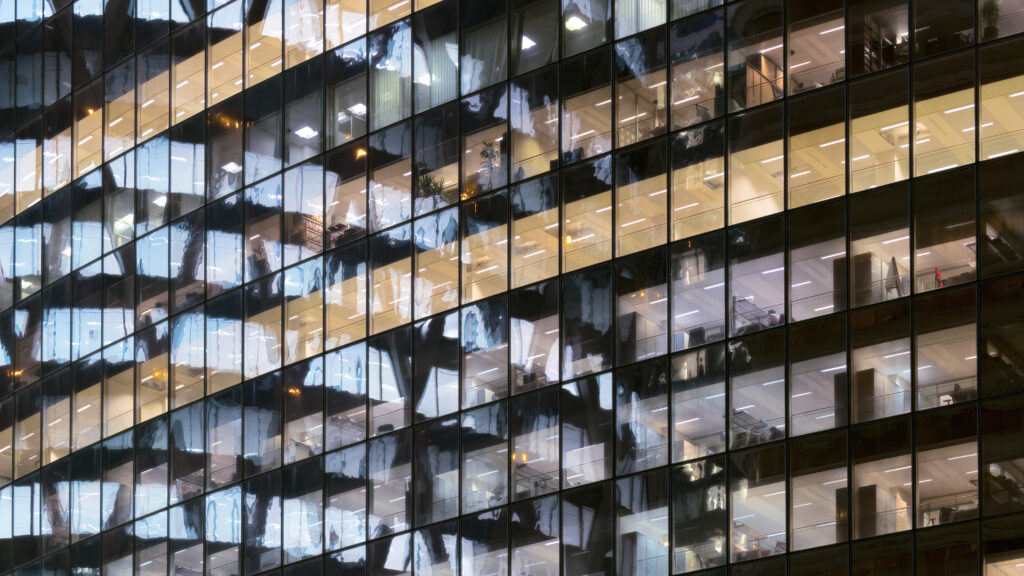Asia’s Most Future-Ready Cities

Mt. Fuji is seen in the background between skyscrapers in Tokyo, one of Asia's best-prepared cities.
Photo: Kazuhiro Nogi/AFP/Getty Images
The planet is urbanizing at an unprecedented speed, generating enormous social, economic and climatic stress. If sustainable urbanization is one of the paramount challenges of the 21st century, then Asia is ground zero for determining whether humanity can succeed. Just under half of all Asians live in cities, compared to roughly 82 percent of Americans and 74 percent of Europeans.
The Asian Urbanization Story
Asians are on the move. Asia’s megacities have already reached a scale that is unimaginable in the West, where the largest metropolises rarely exceed 10 million residents. Asia’s mammoth cities are sprawling archipelagos spanning vast areas, home to upward of 60 million people. The question is whether they are ready to benefit from the coming urban population boom.
The pace of Asia’s urban population growth is breathtaking. The UN estimates that well over half of Asia’s 4.5 billion residents will live in cities by 2026. Some will move to megacities—Asia will be home to 60 percent of all of them by 2025. While the spectacular expansion of metropolises such as Tokyo, New Delhi, Shanghai and Dhaka is mesmerizing, most Asians are not moving to a megacity. In fact, many large cities are witnessing population decline.
Instead, Asia’s turn to cities is driven in large part by fast-paced rural-to-urban migration: the reclassification of rural areas into urban ones accounts for 80 percent of urban growth in China and 67 percent in Indonesia over the past three decades. Collectively, Asian cities experience nearly one million new arrivals every single week, about two-thirds of the global total.
For the most part, Asia’s spectacular city growth has been good for its residents. Many larger Asian cities are becoming richer and consolidating their position as the world’s new economic center of gravity. With some exceptions, the overall quality of life for many Asian city dwellers is improving.
Challenges Remain
Even so, urbanization trends in the region are diverse and uneven, with sprawl, congestion, unemployment and slums emerging as critical impediments. Large pockets of poverty and concentrated disadvantage persist, weighing on Asia’s potential. Asia can avoid the “rear-view mirror” trap—the failure to anticipate future expansion—but only if it squarely faces up to the demographic, social and environmental challenges on the road ahead.
Asia’s urban landscape is, of course, incredibly diverse. Some countries such as China and Japan have amassed the necessary wealth and capacity to deal with a half-century of accelerated urbanization, with decent infrastructure, housing, utilities and services to show for it. But all is not necessarily well. Chinese cities are approaching peak population expansion and many Japanese cities have already flatlined, with many of them facing declining populations. While comparatively well-off, urban populations in both countries are facing serious challenges stemming from pollution, water stress, extreme heat, faltering service delivery, segregation, and aging populations.
South and Southeast Asian cities have a combined population of more than 2.5 billion, eclipsing that of China. India will see its urban population soar to 416 million people by 2050, compared to 255 million new city dwellers in China. The fastest urban population expansion is set to occur in secondary cities of Indonesia, the Philippines, Thailand and Vietnam. These two regions with their young populations will unleash Asia’s next growth wave. But while their infrastructure is adequate and there is boundless investment on the way, the social and environmental risks are mounting.
Asian Cities’ Future Preparedness
So how do Asia’s diverse cities stack up in terms of their preparedness for the future? We identified a subset of East, Central, South and Southeast Asian cities according to their geographic and population size and per capita wealth. We then cross-referenced these same cities according to existing rankings of their relative levels of fragility and adaptivity to technological change. Urban fragility is a composite measure of a city’s exposure to cumulative climate and anthropomorphic risks. A city’s technological adaptivity is associated with the quality and coverage of its digital, physical and socioeconomic assets. Cities that rank high on our list are more agile and prepared than the rest.
Establishing measures of a city’s agility is crucial for urban authorities, business and civic groups to anticipate and navigate the disruptive impact of technological change. To be sure, Asian cities are facing looming labor automation and job displacement in traditional employment sectors such as industrial factory work. These pressures will be amplified by the rapid automation of agriculture-intensive sectors in rural areas.
The transition into urban services economies sustained by digital connectivity will be crucial to maintain high employment and rising wages, as well as the adoption of new skills to thrive in tomorrow’s digital economy. Asian cities also need to cope with the multiple stresses of over-population, inequality, insecurity and environmental stress that are crucial benchmarks of urban sustainability.
Asia’s cities simply cannot afford to paper over gaping deficits in affordable housing, inadequate water and sanitation provision, rising air pollution, heat islands, extreme weather events and other challenges often treated as unavoidable externalities of city growth.
The question is whether Asian cities are willing and able to balance their massive population growth and infrastructure needs while also harnessing new technologies and limiting their carbon footprints. More to the point, can they do this quickly?
Not surprisingly, some cities are more prepared than others. We find that coastal Chinese cities registering significant wealth are also facing systemic vulnerabilities such as diminishing water supplies and rising sea levels (Shanghai, Shenzhen, and Guangzhou). We also identified South Asian megacities that are emerging as major economic hubs, but that are far behind in overall capacity to take advantage of the digital revolution (Karachi, New Delhi, Mumbai, Bangalore, Hyderabad, Chennai, Kolkata, and Dhaka).
Several Southeast Asian cities are well-situated when it comes to their technological preparedness, but are facing above-average fragility risks (Bangkok, Kuala Lumpur, Manila, and Jakarta). Grouping cities geographically captures the similar economic, political, and cultural profiles, underlining the potential for intra- and inter-regional learning and problem-solving.
There is considerable evidence of Asian cities developing solutions to their challenges. Consider Shanghai. It has long suffered from acute air pollution, but has scaled up ambitious programs to produce clean energy and promote electric vehicles. Shenzhen is seeking to balance its scale with livability through new building regulations, carbon trading schemes, and electric cars. In Guangzhou, which has suffered from land and water shortages due to over-development, new construction in fertile areas is being dramatically curtailed. Air pollution was reduced by 42 percent between 2012 to 2016. These three cities and many others are benefiting from new national regulations to curb industrial pollution of the air, land and riverways.
Challenges More Pronounced in South and Southeast Asia
South Asia’s teeming megacities face challenges on an even greater scale than China but without the infrastructure base, financial resources, or political will to cope. In Karachi, Pakistan’s commercial hub accounting for roughly a third of the country’s GDP, decades of neglected utilities have contributed to a solid waste and sewage crisis. The federal government has only just started to invest in desalination and water supply projects as well as an integrated public transport system to ease congestion.
India’s megacities also suffer from notoriously poor urban planning and decaying infrastructure, including inadequate drainage. Mumbai recently launched new zoning laws to increase the stock of affordable housing, while New Delhi, which faces record levels of smog, is building more public transportation and reducing diesel vehicles. Both New Delhi and Chennai face acute water shortages, which the latter is addressing through new programs in water recycling.
India’s tech hubs of Bangalore and Hyderabad have grown so quickly that they, too, have sacrificed natural habitats and vegetation for poorly planned built-up areas. Without massive investments in basic water supply and sanitation, public transportation and distributed housing, these new engines of India’s tech sector will sputter.
Southeast Asian cities are rapidly growing without commensurate investment in strengthening their adaptive capacity. The approach taken in Manila has been to push for rapid conversion of former defense and industrial facilities such as “New Clark City,” employing sustainable building codes and an Internet of Things focus in the process.
Bangkok’s excessive groundwater pumping has accelerated the city’s subsidence rate to up to 3 centimeters per year, with the threat to the city’s foundations amplified by rising sea levels (which also pose a grave threat to Jakarta) and volatile flooding. While Jakarta is investing in sea barriers to slow the rising tide, Bangkok is working to retrofit its dilapidated water infrastructure to promote efficiency and conservation.
Recommendations
Even a cursory review of Asia’s largest megacities reveals a number of hard truths and constructive recommendations.
First, Asia’s inhabitants are not turning away from urbanization despite myriad existential risks. This means federal, state and municipal authorities need to plan for long-term demographic realities—empowering cities with the necessary autonomy and discretion to plan for the future.
Second, Asia’s cities need to place ecological priorities front and center in order to protect their vulnerable populations and build resilience against environmental volatility. This will require significantly greater commitments of public and private resources toward new project pipelines and stricter regulations to ensure sustainable infrastructure development.
Third, Asian cities need to adopt smarter technologies as they move forward. The use of green building materials, the deployment of 3D printed construction methods, the installation of environmental sensor networks, and investments in integrated public transport and renewable energy are all available at ever lower cost.
The good news? Sustainable urban innovation is achievable even for humanity’s largest urban clusters.
This piece first appeared on the World Economic Forum Agenda.






